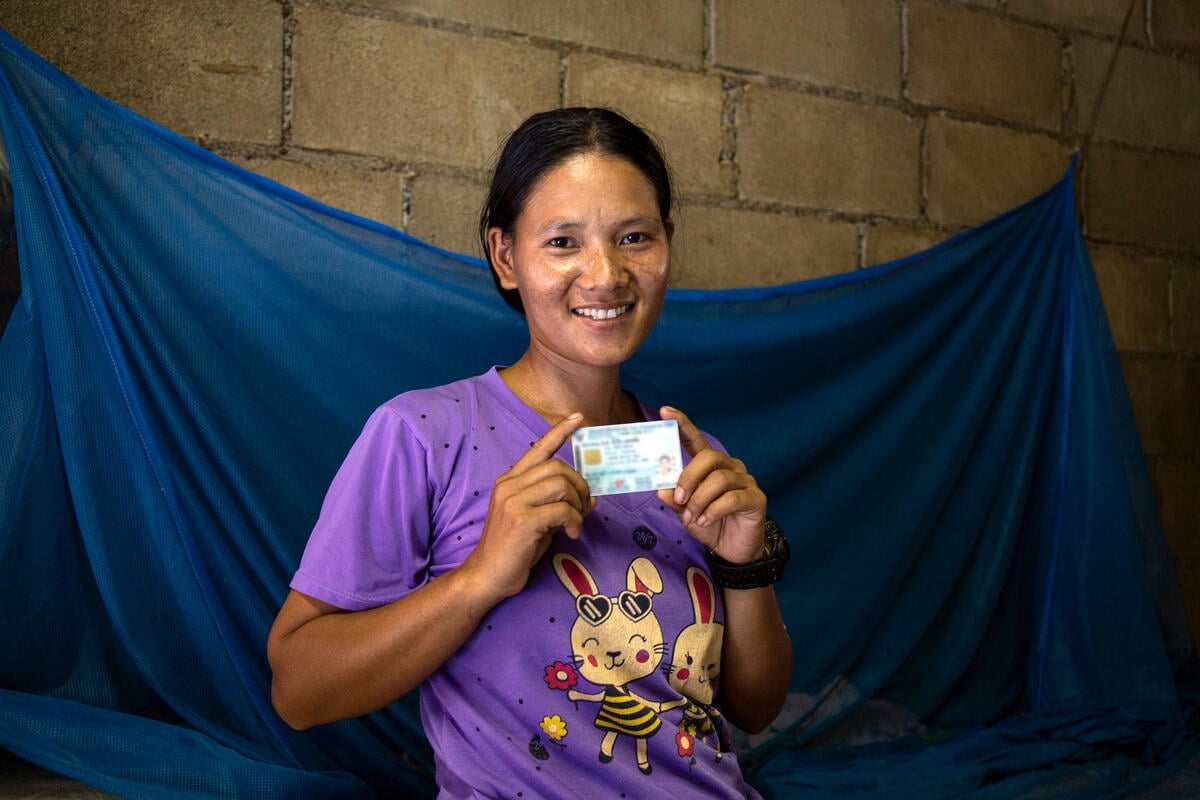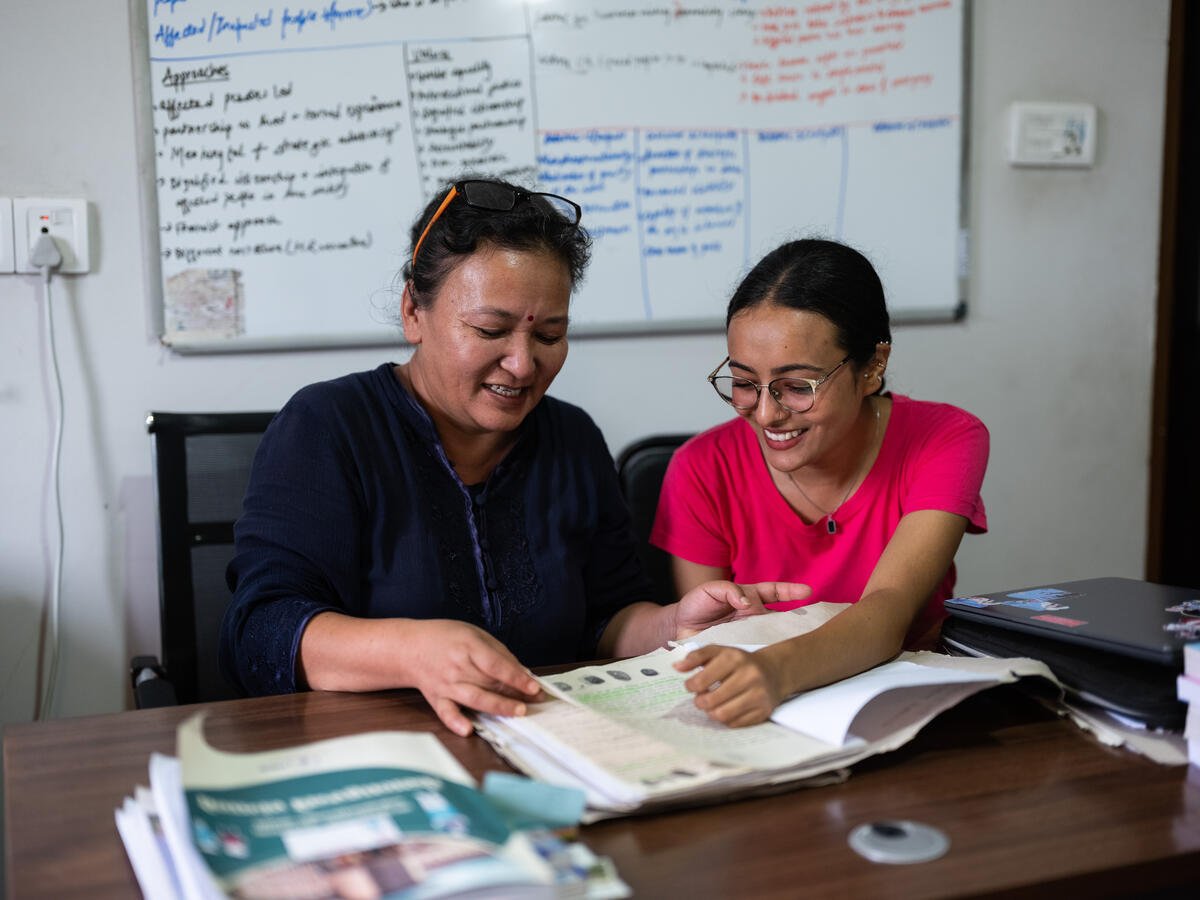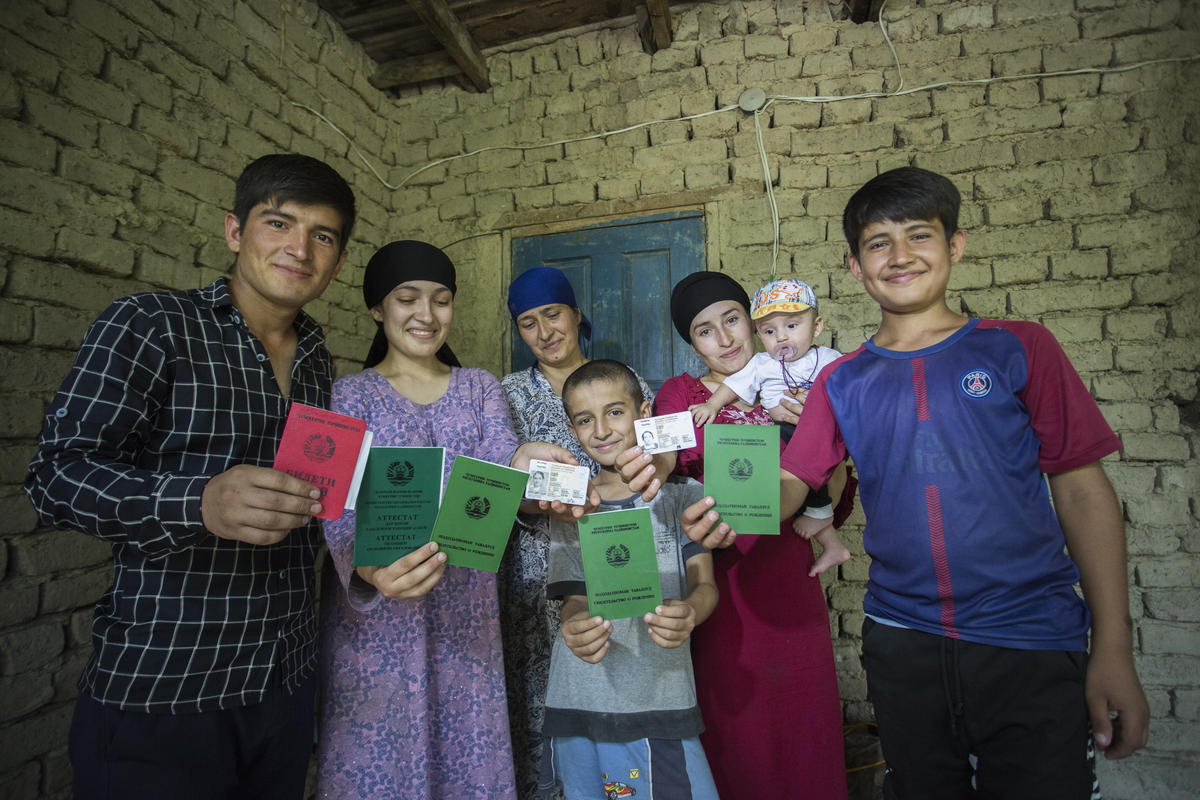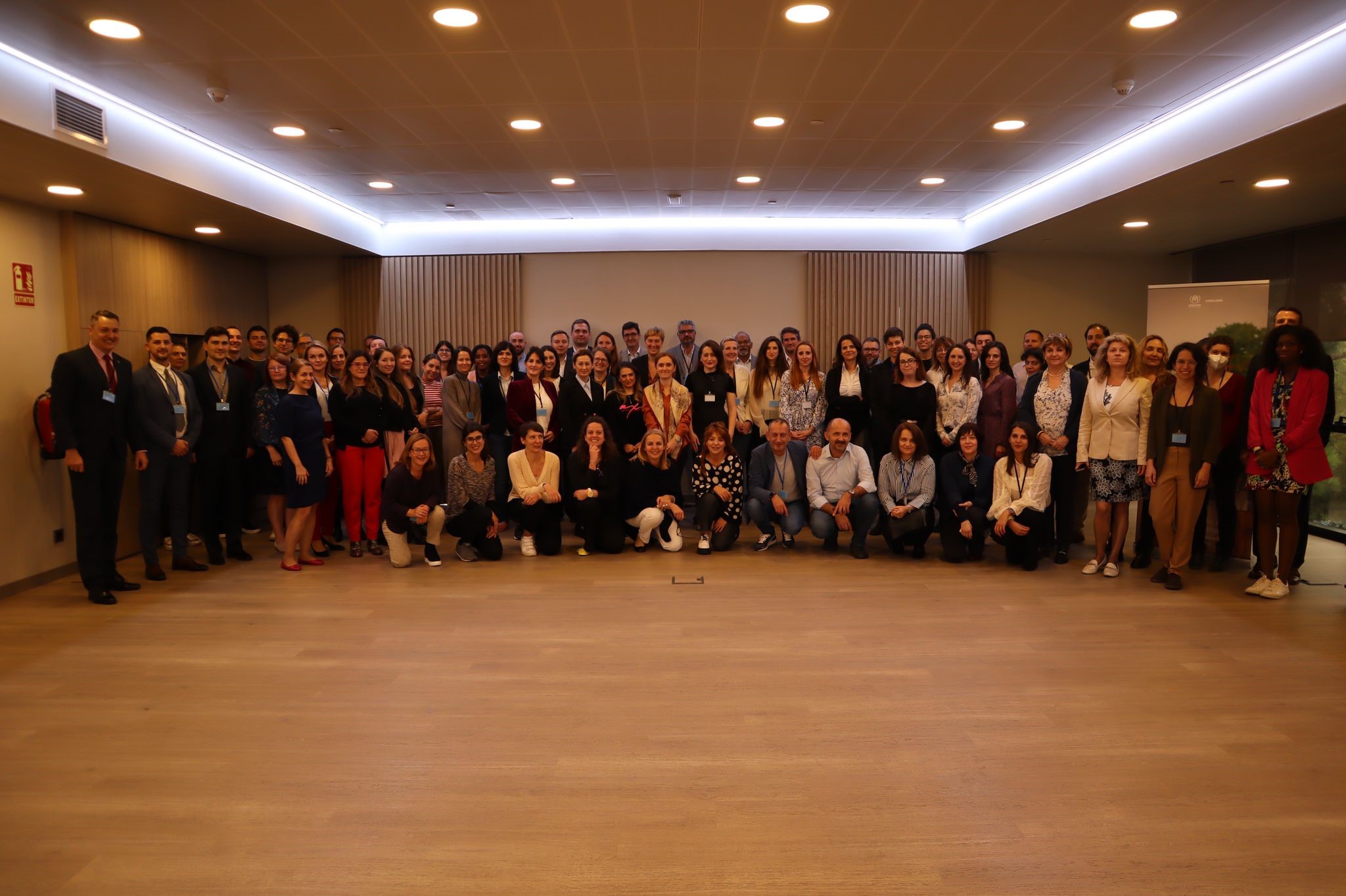Five things to know about statelessness
Five things to know about statelessness

Meepia, who was formerly stateless, shows off her new Thai identification card at her home in Chiang Mai, Thailand.
1. What is statelessness?
According to the UN’s 1954 Convention Relating to the Status of Stateless Persons, a stateless person is someone “who is not considered as a national by any State under the operation of its law”.
People become stateless for reasons beyond their control, leaving them with no nationality and no official identity; they are marginalized and disenfranchised.
At the end of 2023, UNHCR reported that 4.4. million people were stateless or of undetermined nationality, but the lack of accurate data and the difficulties of counting people who have no legal identity means the real number is widely recognized to be much higher.
2. How does someone become stateless?
A person can become stateless through different circumstances such as discrimination on the grounds of belonging to a particular ethnic, religious, or other minority group. In fact, the majority of the world’s known stateless populations belong to minority groups.
Gender discrimination is another important cause of statelessness, with 24 countries having laws that prevent mothers from passing their nationality to their children in the same way as fathers.
Lack of nationality can also be the result of gaps in nationality laws that fail to ensure no one is rendered stateless, and bureaucratic obstacles that make it difficult - or impossible - to acquire or prove one’s citizenship or have a birth registered. “State succession” – when a new country emerges, or an old one breaks up – can also leave large numbers of people at risk of statelessness.
Discrimination or persecution can force someone to flee, becoming a stateless refugee or displaced person, but most stateless people have never left their home countries.
3. What impact does statelessness have on people’s lives?
Stateless people can face challenges in accessing basic rights and services such as education or health care, or to be able to marry, vote, open a bank account, get a formal job, own property, or travel freely.
Statelessness leaves people without social or legal protection; it deepens divisions and fuels inequality.
The exclusion and alienation that is part and parcel of statelessness also has serious emotional and psychological impacts: the feeling of hopes dashed, of dreams destroyed and opportunities curtailed, and of belonging nowhere.
4. What is UNHCR’s role?
Since its founding in 1951, UNHCR, the UN Refugee Agency, has assisted stateless refugees, but its work to address the wider issue of statelessness has evolved significantly since then.
Two key international treaties – the 1954 Convention Relating to the Status of Stateless Persons and the 1961 Convention on the Reduction of Statelessness – are the cornerstones of the international legal framework on statelessness.
Within this framework, the UN General Assembly has mandated UNHCR to work in four key areas: the identification, prevention and reduction of statelessness, and the protection of stateless people. We provide technical assistance to governments to reform laws and implement policies to prevent and reduce statelessness and identify and protect stateless people and at-risk communities with legal assistance, counselling and other support.
UNHCR launched its #IBelong Campaign in 2014 to increase knowledge and awareness of statelessness and push for global action and government commitments to eradicate it.
The campaign has had important successesLink is external – including persuading many more States to sign up to the 1954 and 1961 Conventions and encouraging them to expand nationality rights, statelessness determination procedures and birth registration. But there is still much more to do, which is why the Global Alliance to End Statelessness is being launched in October 2024 to build on recent progress, increase collaboration and accelerate change.
5. What can be done to solve statelessness?
Governments establish who is entitled to nationality in their territories. This makes them responsible for legal and policy reforms necessary to effectively address statelessness. Some of the key actions that States need to undertake to end statelessness include:
- Eliminating discrimination on the basis of race, ethnicity, religion and gender in nationality laws.
- Resolving the situation of people who are already stateless.
- Preventing children from being born stateless, for example by granting nationality to those who would otherwise be stateless.
- Registering every birth to establish legal proof of parentage and place of birth, which are key to establishing proof of nationality.
- Issuing nationality identification documentation to those with entitlements to it so they can prove their nationality.
These are among 10 actions identified in UNHCR’s Global Action Plan to End Statelessness, which lays out a framework for resolving existing statelessness, preventing new cases, and better identifying and protecting those living without nationalities.
The new Global Alliance will take these actions forward, bringing together States, stateless-led organizations, UN agencies and others, to end statelessness.


















